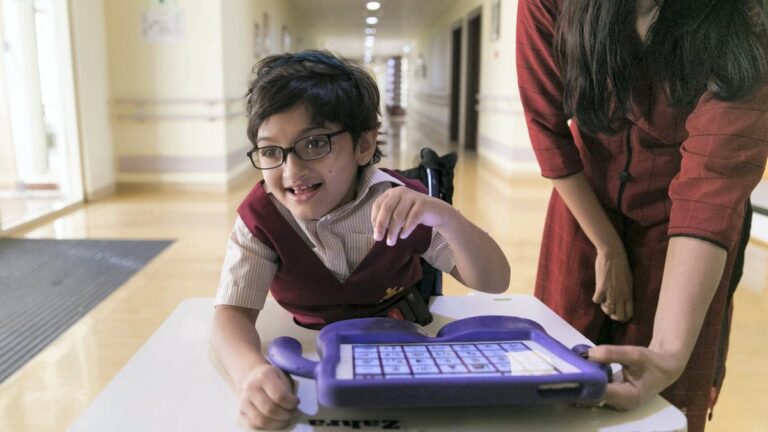
In India, the journey towards inclusivity for children with disabilities has seen significant strides, particularly with the advent of assistive technology. These technological advancements have not only bridged gaps but have also opened doors to a world of possibilities for children facing various disabilities. Let’s delve into how assistive technology is revolutionizing the lives of these children across the nation.
Understanding Assistive Technology for Children with Disabilities
Assistive technology refers to devices, software, or equipment specifically designed to help individuals with disabilities navigate their environment, communicate effectively, and participate more actively in daily activities. In the context of children with disabilities in India, assistive technology encompasses a wide array of tools tailored to address diverse needs, ranging from mobility aids to communication devices.Closing the Gap for special needs children
The integration of assistive technology in educational settings has been pivotal in closing the gap for children with disabilities. With the right tools, these children can actively engage in learning experiences alongside their peers. For instance, specialized software and apps assist children with learning disabilities in reading, writing, and comprehension, fostering an inclusive learning environment. Empowering Communication Communication is fundamental to human interaction, yet many children with disabilities face challenges in expressing themselves. Assistive technology offers solutions such as augmentative and alternative communication (AAC) devices, which enable non-verbal children to communicate effectively. These devices range from basic picture boards to sophisticated speech-generating devices, empowering children with disabilities to express their thoughts, feelings, and needs.Assistive Technology – Enhancing Mobility and Independence
Mobility limitations often pose significant barriers to independence for children with disabilities. However, assistive technology such as wheelchairs, crutches, and prosthetic limbs empowers these children to navigate their surroundings with greater ease and independence. Additionally, advancements in robotic exoskeletons hold promise for enhancing mobility and quality of life for children with mobility impairments.Assistive Technology – Addressing Visual and Hearing Impairments
Visual and hearing impairments can profoundly impact a child’s learning and development. Assistive technology comes to the rescue with innovations like screen readers, magnification software, and braille displays for children with visual impairments. Similarly, hearing aids, cochlear implants, and assistive listening devices facilitate auditory access for children with hearing impairments, ensuring they can fully participate in educational and social activities. According to the World Health Organization (WHO), an estimated 15% of the global population lives with some form of disability, with a significant portion being children. In India, the Census of India 2011 reported that over 2.21% of the country’s population comprises persons with disabilities.These statistics underscore the importance of proactive measures, including the adoption of assistive technology, to address the needs of children with disabilities.Government Initiatives
The Indian government has taken significant steps to promote the adoption of assistive technology for children with disabilities. Initiatives such as the Accessible India Campaign and the Sarva Shiksha Abhiyan (SSA) aim to create barrier-free environments and improve access to education for children with disabilities.
Additionally, schemes like the Assistance to Disabled Persons for Purchase/Fitting of Aids and Appliances (ADIP) provide financial assistance for acquiring assistive devices, further facilitating inclusion and empowerment.


